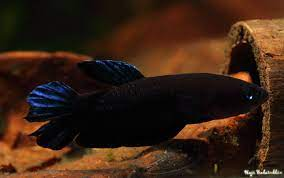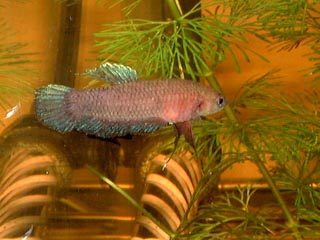DAY 153
https://bwaquatics.com/products/wild-betta-persephone?variant=35242030530712


Persephone Betta
Betta persephone
Size: 1”
pH: 5.0-6.5
Tank size: 2.5G/Individual
Country of origin: Malaysia
Diet: Most dry, frozen, and live foods small enough will work
Temperament: Aggressive, though could possibly be kept in a community tank under the right circumstances
Temperature: 75-80° F
Description
Betta persephone, known only from Johor in Malaysia, is one of, if not the smallest Betta species in the world. It is named after the Greek goddess Persephone of the underworld, largely due to its blackish coloration. Clear sexual dimorphism, as shown above. (Left: male, right: female) Part of the coccina complex.
https://bwaquatics.com/products/wild-betta-persephone?variant=35242030530712
Persephone Betta
Betta persephone
Size: 1”
pH: 5.0-6.5
Tank size: 2.5G/Individual
Country of origin: Malaysia
Diet: Most dry, frozen, and live foods small enough will work
Temperament: Aggressive, though could possibly be kept in a community tank under the right circumstances
Temperature: 75-80° F
Description
Betta persephone, known only from Johor in Malaysia, is one of, if not the smallest Betta species in the world. It is named after the Greek goddess Persephone of the underworld, largely due to its blackish coloration. Clear sexual dimorphism, as shown above. (Left: male, right: female) Part of the coccina complex.


